The potential of NFT beyond CryptoPunks, or let’s tokenize everything!
“Let’s tokenize my self-designed coat! Let’s make sure its origin and time of production is clearly verifiable!” cried my Sweetheart with a twinkle in her eyes after I explained the opportunities offered by NFTs. At that moment, she realized there are more potential uses of NFT beyond CryptoPunks and CryptoKitties.
I consider familiarizing others with new, groundbreaking technologies a part of my mission as an engineer. Previously, it would have been hard to imagine a project that would unite her world of “couture” with my “nerdish” interests. Yet NFT still managed to pull it off… But what exactly led to this exclamation?! Well, it went a little something like this...
It’s all about this distributed ledger technology that employs a suitable degree of encryption. This is what we call a blockchain. The entries of this ledger are immutable. Truly immutable! This is not due to the application of well-known protective measures, but rather the basic operational features of the system ensure a high level of security. The reason for this is that this would take changing an entry in a specific block on a large number of globally distributed computers at the same time in a way that all subsequent blocks would be aware of this change.
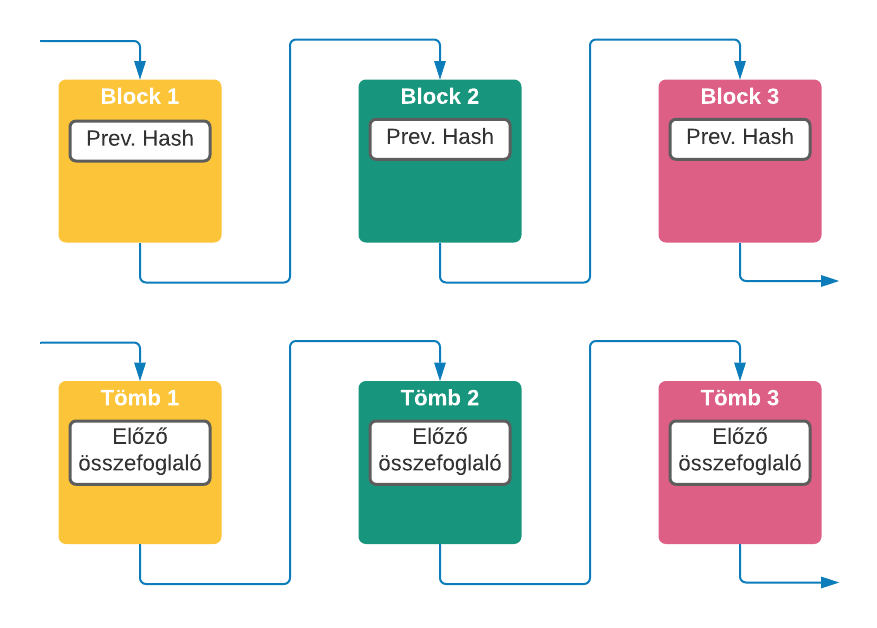
This is due to the fact that this unique ledger has a special block ordering mechanism. All newly opened blocks begin with a condensed summary, or hash of all the essential elements of the previous block. Therefore all newly opened blocks know of the contents of the previous block. This way, all cheaters can be easily hashed.
Furthermore, an entry can only be recorded with the author’s digital signature. It can be precisely determined who recorded all entered data. Think of it as authenticating your notes with fingerprints. Apart from the authentication, the ledger also records a timestamp of the creation of the entry.
The goal is to record a “smart” entry in this distributed ledger. We can record facts in this “smart” entry that we wish to store in an immutable and transparent fashion. These include, for example, proof of copyright. In this case, we would like to immutably and transparently store the time of creation and origin of a unique garment. However, a pure text-based entry would leave too much for the imagination. Since we’re talking about a physical object, it would be better to store a picture of it. This turns our “smart” entry into some iNcredibly Fancy conTent...
The primary feature of NFT tokens are their singular nature. So what makes them so special? This is limited only by creative imagination. The aggregate of features and values that determine this singular nature are metadata. These are the permanent, immutable data of the NFT in question.
The other key feature of NFTs is their available amount. During their production, it is clearly necessary to determine the number of available copies of the NFT. Furthermore, it is important to define whether these copies are non-interchangeable or if they support fractional ownership rights (fractional NFTs). Simply put, the latter is an investment approach, where the cost of the device is shared amongst the interested parties who then share its access rights.
NFTs have multiple fields of application. They can be used to tokenize anything. Practically anything can represent a unique, digital value that can be identifiable and conveyable, yet not copied. We are trying to transparently verify the origin of a physical object in a way that makes it accessible by anyone at any time. In our case, the value of the NFT token is based on the value and singular nature of the physical object. A single size and copy is made of all garments, which is recorded with a non-interchangeable NFT token. The person commissioning the unique garment is the sole owner of the token of the garment.
“Great, let’s start tokenizing!” I cried, bravely taking on the challenge… However, at the time, I only had a theoretical notion of the technological challenges I was up against.
Due to the current NFT fever, it was advantageous to use the Ethereum (ETH) network. Most crypto projects run under Ethereum, not just NFT. However, the transaction fees can occasionally be rather steep on the version of ETH that currently is being applied. Although conveying the ownership of a unique garment is a one-time cost, since we are digitizing and automating everything, I would appreciate a more narrowly defined “notary” fee than the current ETH transaction fees.
As digital content, NFTs move from one wallet to the next as part of a digital transaction. As to where the digitized content belongs or whose wallet it is linked to, is represented as an entry in this unique ledger. The ETH network can process 15-45 transactions per second. You could say it’s a bit slow.
As interoperability was a key factor, I examined Layer 2 solutions and Ethereum forks such as Binance Smart Chain and Solana. I also considered Polygon… Polygon is a protocol and framework system for structuring and linking Ethereum-compatible blockchain networks. All of these are strong solutions that – from the perspective of NFTs – were mostly developed to support NFT-based games and metaverses. Taking a closer look at the infrastructure of the afore-mentioned networks and considering the ecology of the tasks I was faced with, it’s easy to see that it’s better to use a more environmental-friendly solution for the sake of long-term sustainability.
It should be fast and support tokenization and interoperability with favorable transaction fees. In light of the task at hand, I finally opted for the Algorand blockchain network.
I’ve got the ledger! All I needed to do was take care of the smart registration. ERC-721 is the most common standard for recording the smart contract, including the metadata. As mentioned above, Ethereum is the biggest player, therefore it is also the trailblazer when it comes to standardization. For the sake of interoperability, it’s recommended to observe these standards.
ERC-721 introduces the NFT standard, i.e. the token type that can be used to uniquely identify someone or something. Conversely, the ERC-1155 Multi Token standard, which is an extended version of ERC-721, allows all token identifiers to represent a configurable token type, which can include its own metadata, set and other attributes. This extension ensures that when tokenizing an arbitrary thing, the recorded metadata would describe the thing in question in the best possible way. On the Algrorand network, the name of the standard correlating to ERC-1155 is ARC-0003. The tokenized coat complies with the ARC-0003 standard.
Storing data on a blockchain network is a costly solution. The speed of the transactions and the size of the ledger necessitates that the smart contracts and the stored metadata are reduced to the smallest possible size. For this sake, the NFTs consist of two parts: the intelligent contract and the metadata of the actual work of art. The intelligent contract is stored on the blockchain. The intelligent contract includes a link that leads to the server storing the digitized content. This is the Off-Chain NFT.
Off-chain storage includes the centralized hosting provider and the InterPlanetary File System (IPFS). The issue with centralized storage is that in case the server shuts down or the service provider in question is dissolved, the digital content will be lost. IPFS is a safer way of finding the data, as it uses a distributed, decentralized solution. On an immutable blockchain network like Algrorand, IPFS users upload hashes, which lead to the data stored on the IPFS. As these are merely links, they do not pose much of a burden to the blockchain, as opposed to raw data.
When an IPFS node requests data from the network, it retains the data in the local cache for future use, thus taking up space at the IPFS node in question. However, IPFS nodes clear the cache from time to time to make room for new content. In order to ensure the retention of the content, it’s worth pinning it to the node. Pinning prevents the loss of information from the node that is important to us during the deletion process. There are a number of pinning service providers that provide paid services above a certain size.
This leaves us with only a single challenge: connecting the real and virtual representation of the coat. During its production, a washing and iron-resistant NFC chip was sewn into the coat, with password-protected content. The NTAG21x series is recommended for password protection. The chip stores the link of the transaction recording the NFT along with the NFT identifier.
As demonstrated above, creating an entry on the blockchain first requires a digital signature of the content we wish to enter. In order to have a signature, we must first have a private key which is received by creating a wallet belonging to the blockchain in question. When creating the wallet, it’s recommended to note down and safely store the passphrase with non-digital means. In possession of the 25-word passphrase, our wallet and private key can be restored at any time.
Crypto wallets only store private and public keys. When checking the balance and displaying possessed NFTs, the wallet queries the data from the blockchain registered for the private key in question. The registered data is only stored on the blockchain.
Algorand has great documentation. With some legwork, you can write your own smart contract and record it on the blockchain via the “sandbox”. If you don’t want to start programming, there are a number of so-called dApps (decentralized applications) that can be used to create the required digital content.
Creating an NFT is a transaction that is registered on the blockchain. This transaction is public and searchable by anyone with the transaction ID
- transaction id: EZT2GH3SOI5UIL6RBVGF4E4OWK6GKK2WE7W3ZSKPY2HX4DEGIHVA
- public link
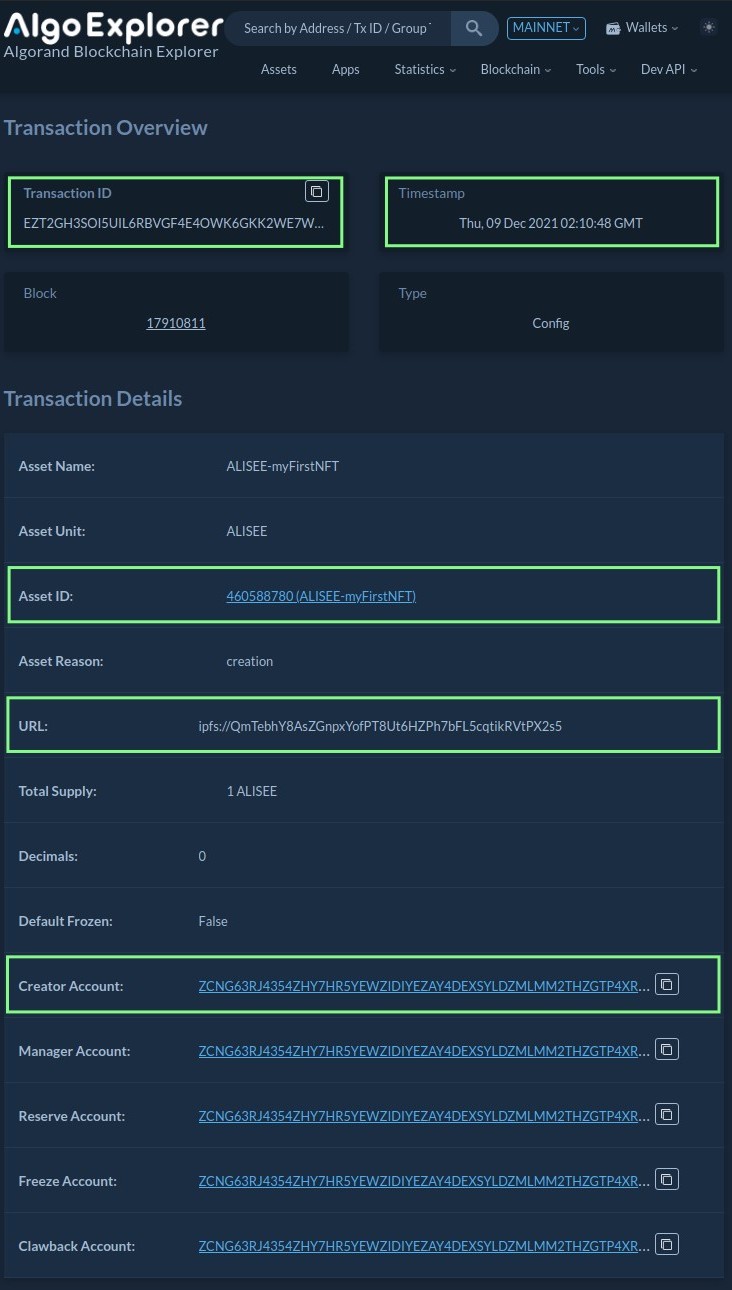
The transaction details include the timestamp, the asset ID of the registered NFT, the link to the metadata and the author’s public key. The NFT details include the metadata hash and the owner’s public key:

The hash can be used to prove that the accessible content and the content registered at issuing are identical.

The metadata of the transaction described above according to the ARC-0003 standard:
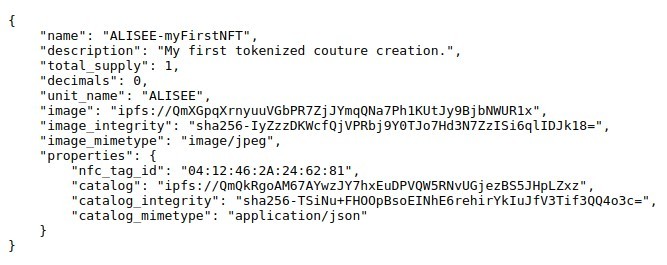
The metadata registered with the transaction links to the image and details below and also include the unique identifier of the NFC chip in the garment. I can make good use of the fact that the memory segment storing the identifier of the NFC chip is non-editable, thus further strengthening the ties between the physical and virtual reality.
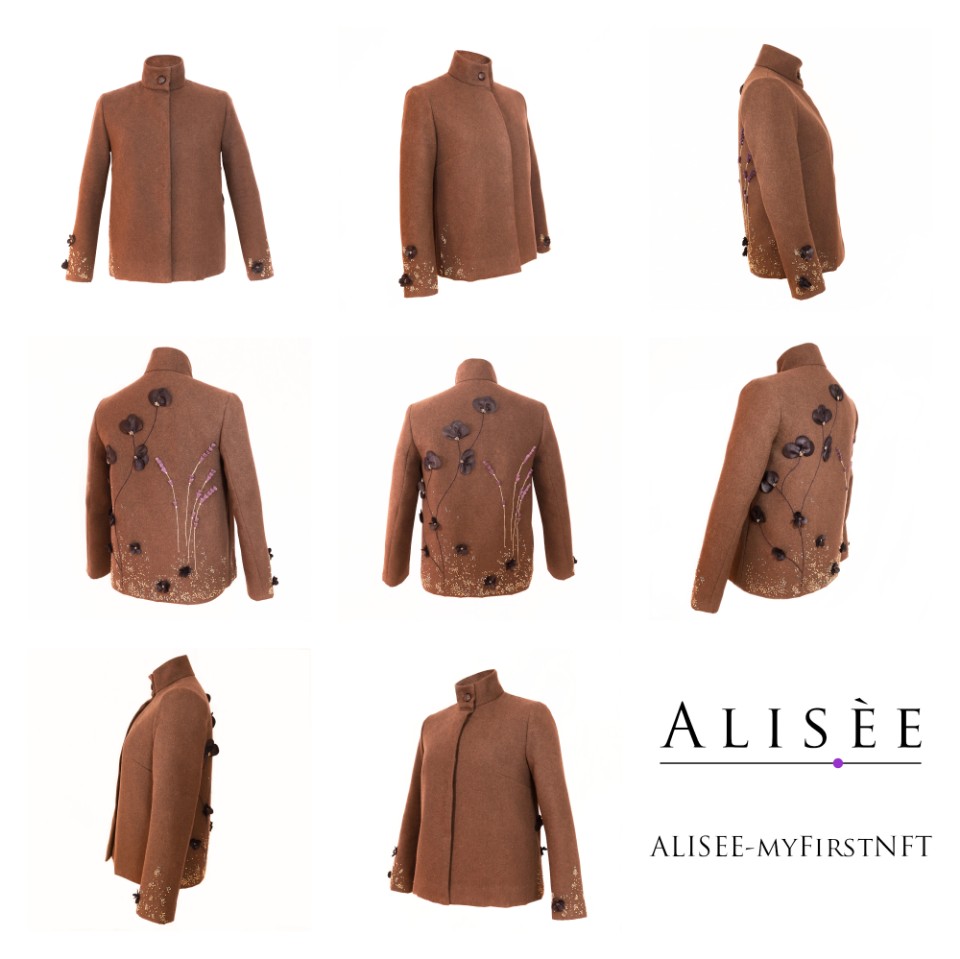
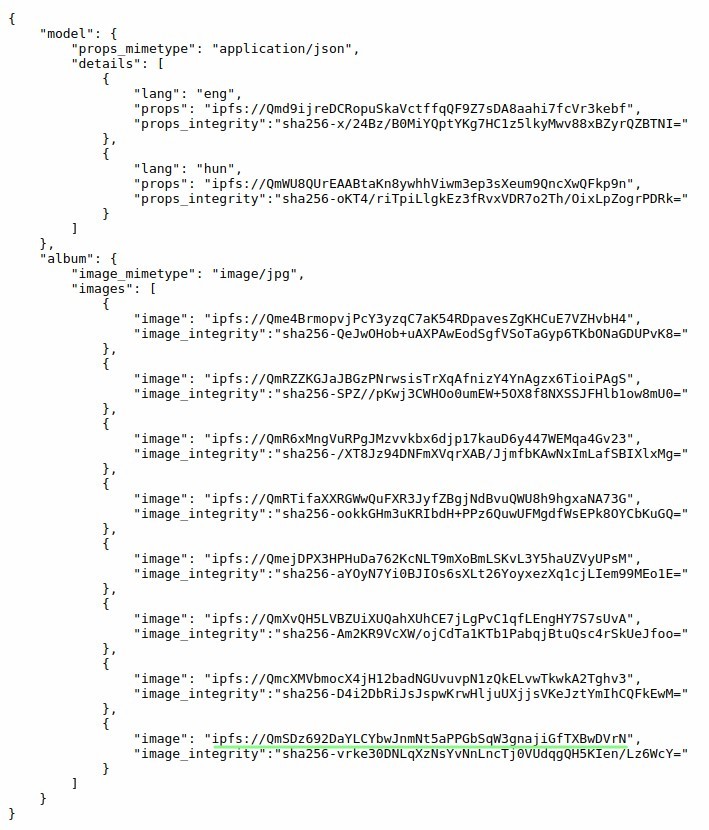
Additional details are essentially displayed in catalog format. This catalog includes the precise description of the coat’s parameters as well as high resolution images. The “photo album” includes an “images” list and the eighth item on the list is the image below. The attached content is accessible by both IPFS and SSL protocols. Using the IPFS protocol requires an image browser such as Brave. In the case of other browsers, you can use a public IPFS proxy to access the shared image.
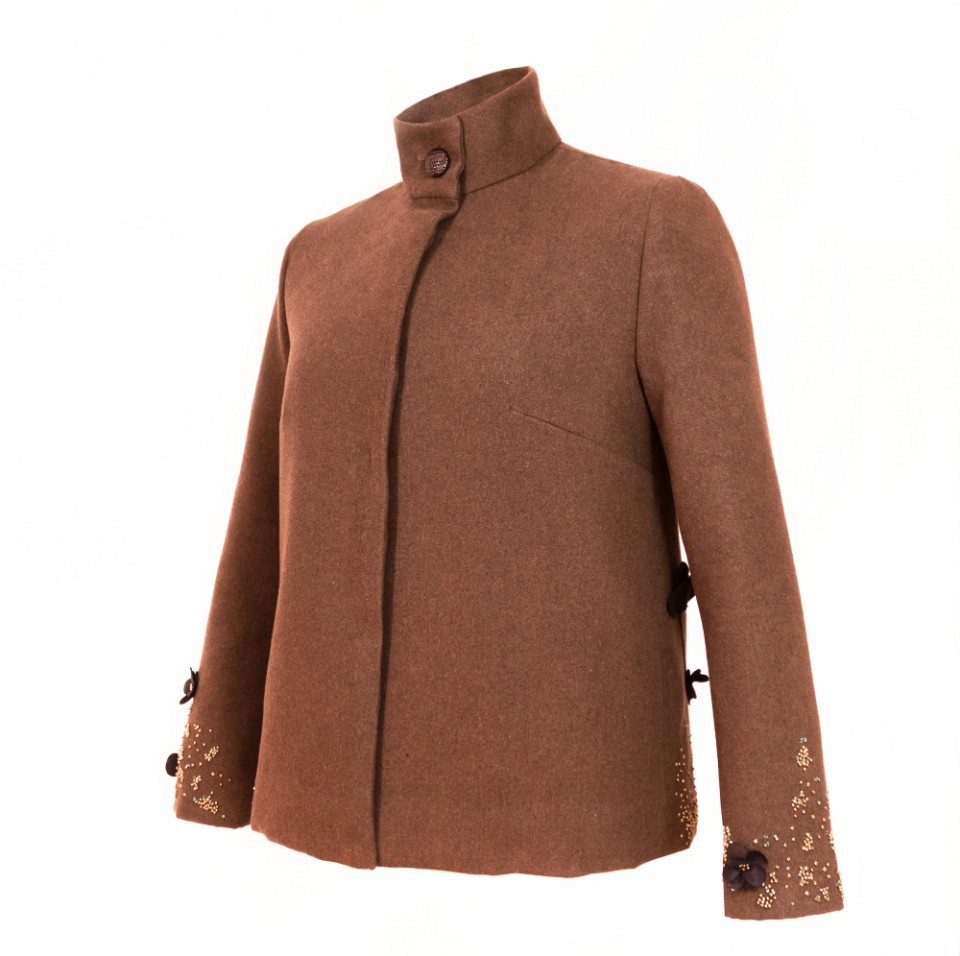
Was it a good idea to split the metadata into two JSONs??! There are many views on this subject. What is your opinion? :)
For the sake of secure data storage, the metadata files and images are pinned at a pinning service provider.

One of the great advantages of the Algorand “asset management” is that you can’t send the NFT, i.e. the ownership rights of the digitized device to anyone. This can prevent the non-desirable transfer of ownership, for example, imposing a debt-ridden device on someone. In the case of “asset tokenization”, the physical object and its digital copy go hand in hand. This, however, leads to logistics issues. Dispatching the digital content only takes a few seconds, while physical delivery can take several days. This can easily lead to a situation in which the owner has already sold the newly-purchased NFT prior to the arrival of its physical representation…
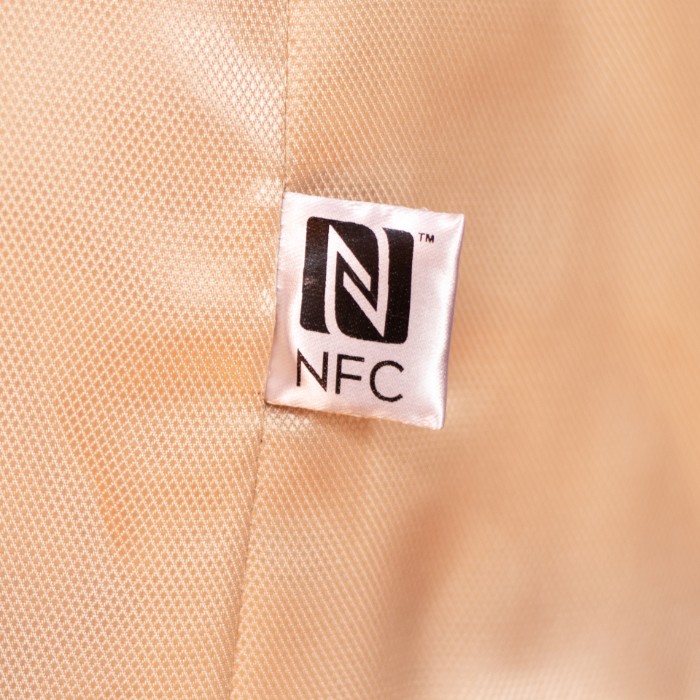
In the current case, transfer of the NFT takes place simultaneously to the handover of the physical garment. The person commissioning the garment can use the NFC included in the garment to read the “asset ID” and use the appropriate mobile wallet to apply for its receipt. The sender can only transfer the previously agreed NFT. The entire process is completed in less than 4 seconds and at current rates, it only costs HUF 0.49.
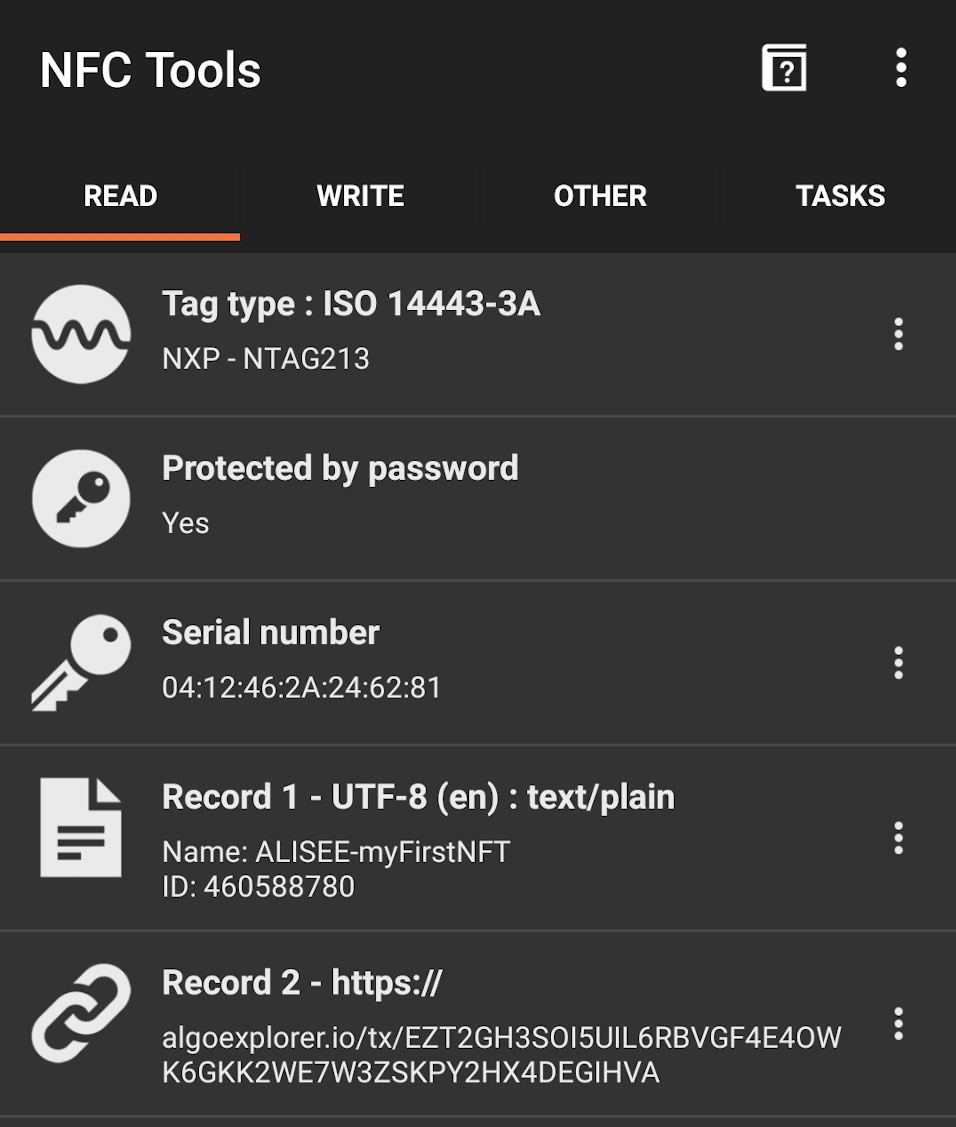
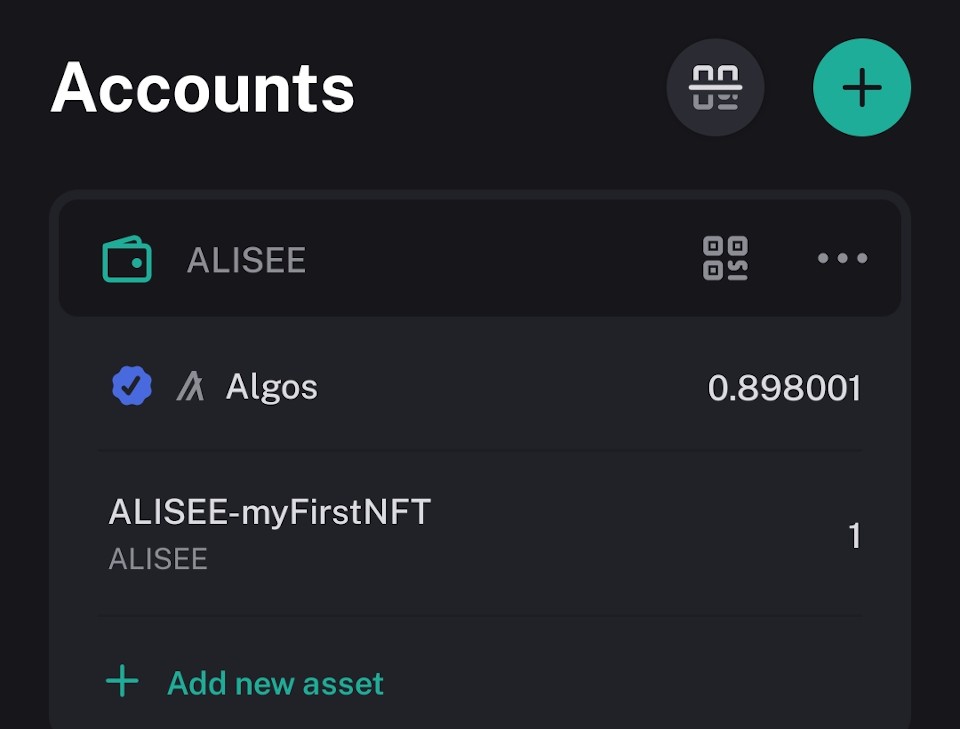
With the use of a smart contract and the attached photographic evidence, we have successfully protected the garment’s origin and time of creation. The NFT also ensures the completion of the delivery/acceptance process and the registration of ownership. All of this is immutably and transparently stored without paper-based contracts or notaries.
I feel we should only tokenize when necessary. I see it meaningful in the case of substantial value or when protecting original ideas. Tokenizing anything and everything is unnecessary.
As demonstrated above, it is now technologically feasible to tokenize a uniquely designed garment, real estate, priceless painting or basically anything. The problem lies in the lack of the comprehensive legal background. It stands to question how immutable, transparent and digital evidence of this nature will be handled in the judicial system.
I am looking forward to finding out!
2022-01-12
The potential of NFT beyond CryptoPunks, or let’s tokenize everything!
12 min
Services and products we used
Share

